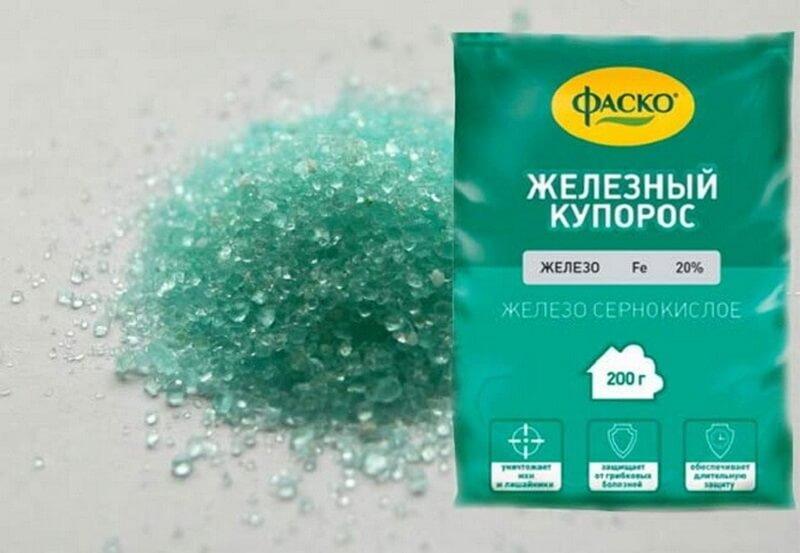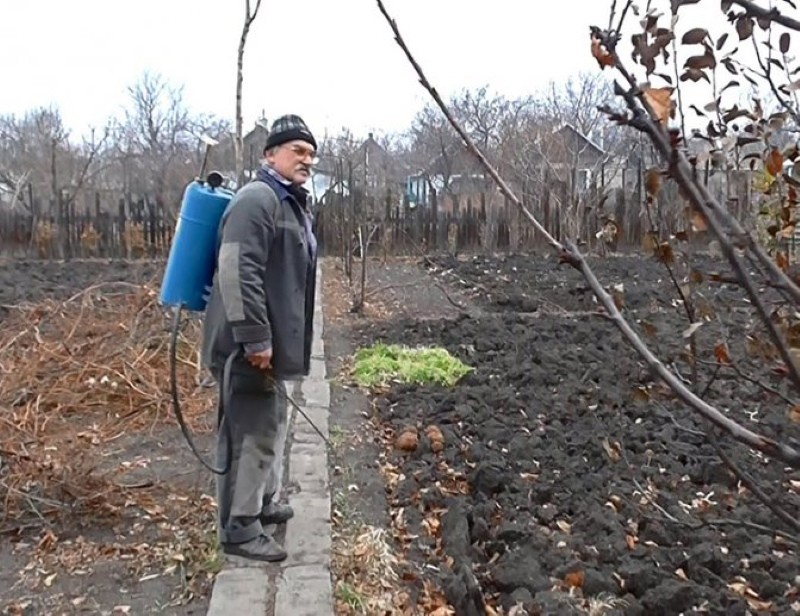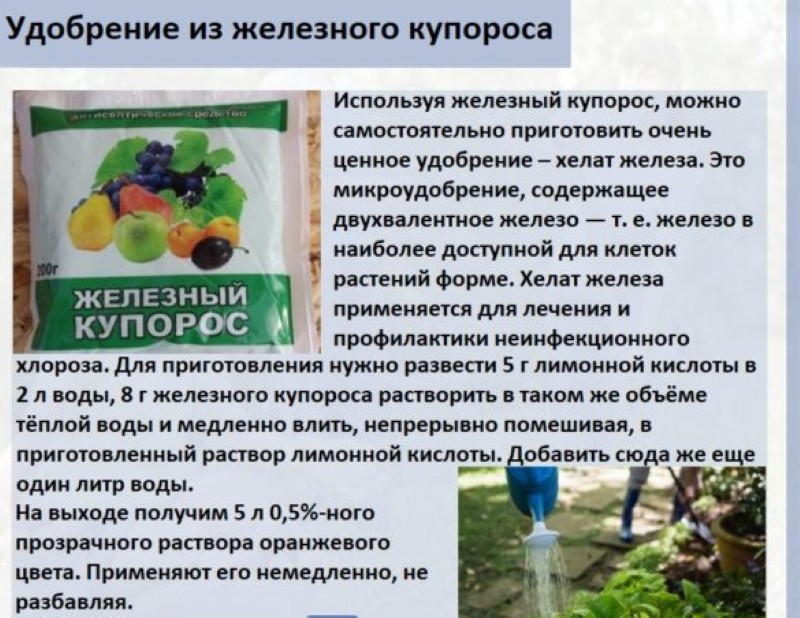Processing the garden with iron sulfate in autumn - effective protection and treatment of fungal diseases
 One of the most affordable and effective preparations for fruit and berry crops is ferrous sulfate. Treating the garden with iron sulfate in autumn will help protect or cure trees and shrubs from many fungal diseases. Why wait until spring and give fungi a chance to overwinter when you can get rid of them now? In addition, ferrous sulfate also serves as an important fertilizer for crops. Iron chelate is made from it, in which this trace element is in the most accessible form for assimilation by plants. Using such fertilizer will help prevent and even cure chlorosis, one of the most common diseases. But for this it is important not only to prepare the correct proportion of the solution, but also to carry out the processing at a certain time.
One of the most affordable and effective preparations for fruit and berry crops is ferrous sulfate. Treating the garden with iron sulfate in autumn will help protect or cure trees and shrubs from many fungal diseases. Why wait until spring and give fungi a chance to overwinter when you can get rid of them now? In addition, ferrous sulfate also serves as an important fertilizer for crops. Iron chelate is made from it, in which this trace element is in the most accessible form for assimilation by plants. Using such fertilizer will help prevent and even cure chlorosis, one of the most common diseases. But for this it is important not only to prepare the correct proportion of the solution, but also to carry out the processing at a certain time.
When can I spray trees and shrubs with ferrous sulfate

The drug can be used only during the period when there are no leaves on trees and shrubs. In autumn, they can be processed after leaf fall, and in spring - before bud break. And most importantly, there should be no rain during the day, otherwise it will wash off the solution even before it has time to act.
Garden processing with iron sulfate in autumn - in what cases it is applied
 Ferrous sulfate solution is an effective treatment for diseases such as:
Ferrous sulfate solution is an effective treatment for diseases such as:
- spotting in garden roses;
- scab;
- gray rot;
- coccomycosis;
- oidium;
- anthracnose;
- powdery mildew;
- alternaria.
In addition, ferrous sulfate destroys mosses and lichens on trees, promotes the healing of mechanical damage to the trunks. Even many pests die after treatment.
How to prepare treatment solution
 Depending on the task at hand, as well as on the type of crops, the working solution will have a different concentration:
Depending on the task at hand, as well as on the type of crops, the working solution will have a different concentration:
- disease prevention - 1% solution for all plants (100 g of the drug per bucket of water);
- treatment of diseases in stone fruit crops - 3% solution (300 g);
- treatment for diseases of pome crops - from 4 to 5% (respectively, 400 or 500 g);
- from lichens and mosses - 5% for stone fruits and 3% for pome crops.
For the treatment and prevention of chlorosis, a weaker concentration of 0.1% is used. This is no more than 10 g of the drug per bucket of water, which is used for foliar feeding - spraying on a leaf. Or you can water the trees and bushes with a 5% solution (500 g of the drug per bucket of water).